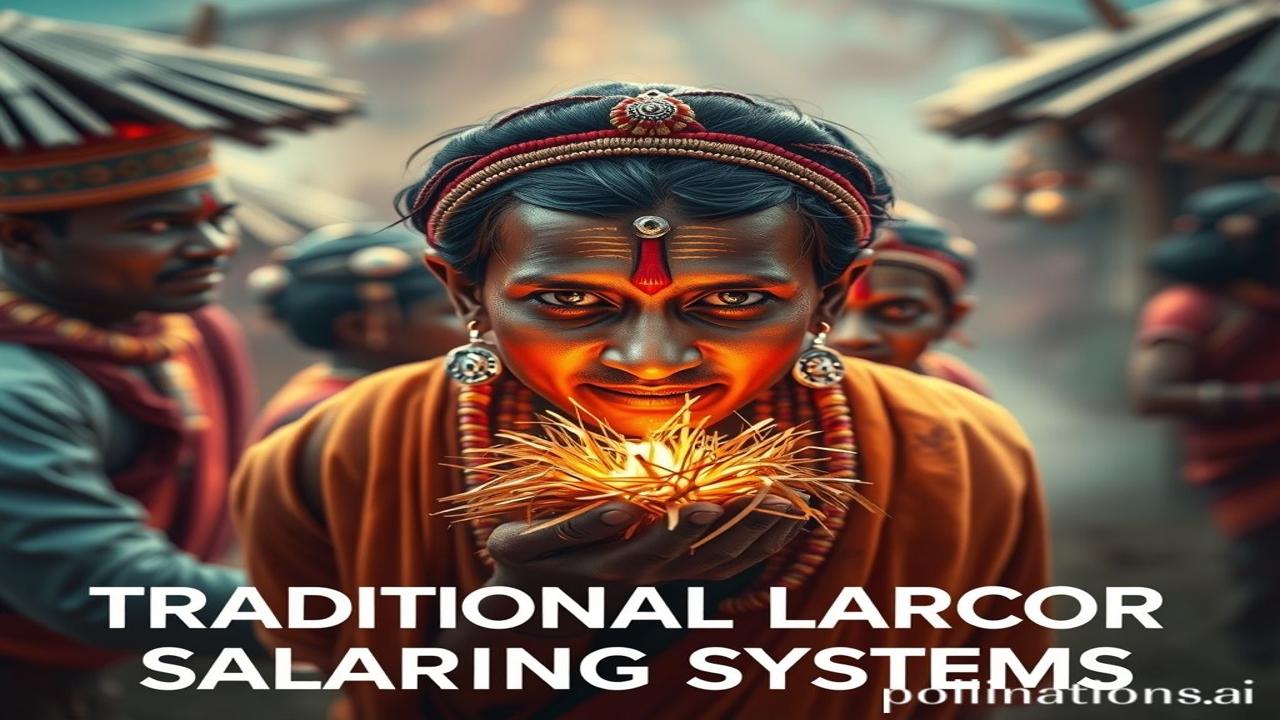Waqt Ki Dhool Mein Dabi, Saanjhi Mehnat Ki Kahani – Traditional Labor Sharing Systems
Kabhi socha hai, jab tractor nahi the, jab sirf haath aur dil ki mehnat thi, tab gaon kaise chalte the? Imagine, suraj dhal raha hai, kheton se uthti mitti ki mehak, aur har ghar se aati rotiyon ki khushboo… lekin yeh sab akele toh nahi hota tha na? Waqt ki dhool mein kuch kahaniyan chhup jaati hain, kahaniyan saanjhi mehnat ki, aapas ke sahare ki – the stories of traditional labor sharing systems.
Kya Hai Yeh Saanjhi Mehnat? (What is This Shared Labor?)
Traditional labor sharing systems, jinko Hindi mein hum ‘Partha’, ‘Badli’, ‘Harali’, ya phir area ke hisab se alag naam se jaante hain, basically ek tareeka tha jismein gaon wale ek doosre ki help karte the without direct payment in cash. Yeh ek tarah ka community-based system tha jismein farming, building houses, weddings, ya aise hi important kaam sab mil jul kar karte the.
When and Where?: Yeh system India ke gaon mein hundreds of years se chalta aa raha hai. Historical records toh nahi milte exactly kab shuru hua, but we can assume it goes back to the days when agriculture was the backbone of the economy and community was everything. From the fertile plains of Punjab to the hilly regions of the Himalayas, har jagah iska alag-alag roop dikhta tha.
Why is it Important?: Today, in our fast-paced world, it’s easy to forget the value of community and interdependence. These labor-sharing systems remind us that, for centuries, Indian society thrived on mutual support and cooperation. Yeh ek misaal hai ki kaise log apni zaruraton ko poora karne ke liye aapas mein jure rehte the, especially in times of scarcity or when facing big projects.
Zameeni Sach: Kisan, Karigar Aur Zindagi (The Real Ground Reality: Farmers, Artisans, and Life)
Imagine, Champa Devi ke ghar beti ki shaadi hai. Parivar ke paas itne paise nahi hain ki sab akele kar paye. Tab gaon wale aage aate hain. Mard milkar pandal banate hain, rasoi ka saaman laate hain, aur mahilayein mehndi lagati hain, geet gaati hain. Yeh sab bina kisi expectation ke, sirf pyar aur saath dene ki bhaavna se hota hai.
Dialogue ka ek chota sa snippet:
“Arre Champa, fikar mat karo. Ham sab hain na? Yeh shaadi toh hum sabki hai!” – Gaon ka ek buzurg aadmi kehta hai.
“Haan, kaka. Aapke bina hum kaise karte? Bhagwan aapka bhala kare!” – Champa Devi ki aakhein nam ho jaati hain.
In systems mein, sirf kisan hi nahi, artisans bhi shamil hote the. Kumhar mitti ke bartan banata tha, badhai ghar ke liye lakdi ka kaam karta tha, aur yeh sab ek doosre ki madad karte hue apni zindagi guzarte the. Har kisi ko apne hunar se community mein contribute karne ka mauka milta tha.
Dharohar Aur Pehchan: Aaj Bhi Hai Ehsaas (Cultural Significance Today: Still a Feeling)
Although these systems have largely disappeared from modern India, their spirit still lingers. We see glimpses of it in community events like Ganpati celebrations, Durga Puja pandals, or even weddings where relatives and friends come together to help. The idea of “ekta mein shakti hai” (there is strength in unity) is deeply ingrained in our Bharatiyata.
You know, when you see a group of villagers planting trees together or cleaning a local pond – that’s a modern echo of the traditional labor-sharing system. Even in cities, you see it in housing societies where people collectively maintain the common areas or organize festivals. Yeh jo aapas mein mil jul kar kaam karne ki bhaavna hai, woh aaj bhi zinda hai.
Mazedar Tathya Ya Bhram-Bhanjak (Fun Fact or Myth-Buster)
Myth: Log samajhte hain ki yeh system sirf gareeb gaon walon mein hi tha.
Truth: Even zamindars (landlords) participated in these systems, although their contribution might have been in the form of resources or leadership rather than physical labor. It was about creating a sense of collective responsibility.
Drishya Aur Bhavnaayein: Gaon Ki Yaad (Visual and Sensory Layer: Memories of the Village)
Imagine the smell of freshly tilled earth mixed with the sweat of hardworking farmers under the blazing sun. The rhythmic sound of sickles cutting through the wheat fields, punctuated by laughter and folk songs. The cool touch of clay pots filled with water, offered to thirsty laborers. These were the sensory experiences that defined life in rural India, and labor-sharing systems were an integral part of that experience.
Antim Vichar Ya Uddharan (Closing Insight or Quote)
“Saha Naavavatu, Saha Nau Bhunaktu, Saha Veeryam Karavaavahai” – May we be protected together, may we be nourished together, may we work together with great energy. This ancient shloka encapsulates the spirit of cooperation and collective effort that was the cornerstone of traditional labor-sharing systems in India. In a world that often prioritizes individualism, let us remember the strength and resilience of our communities, and strive to build a future where everyone is supported and valued.
